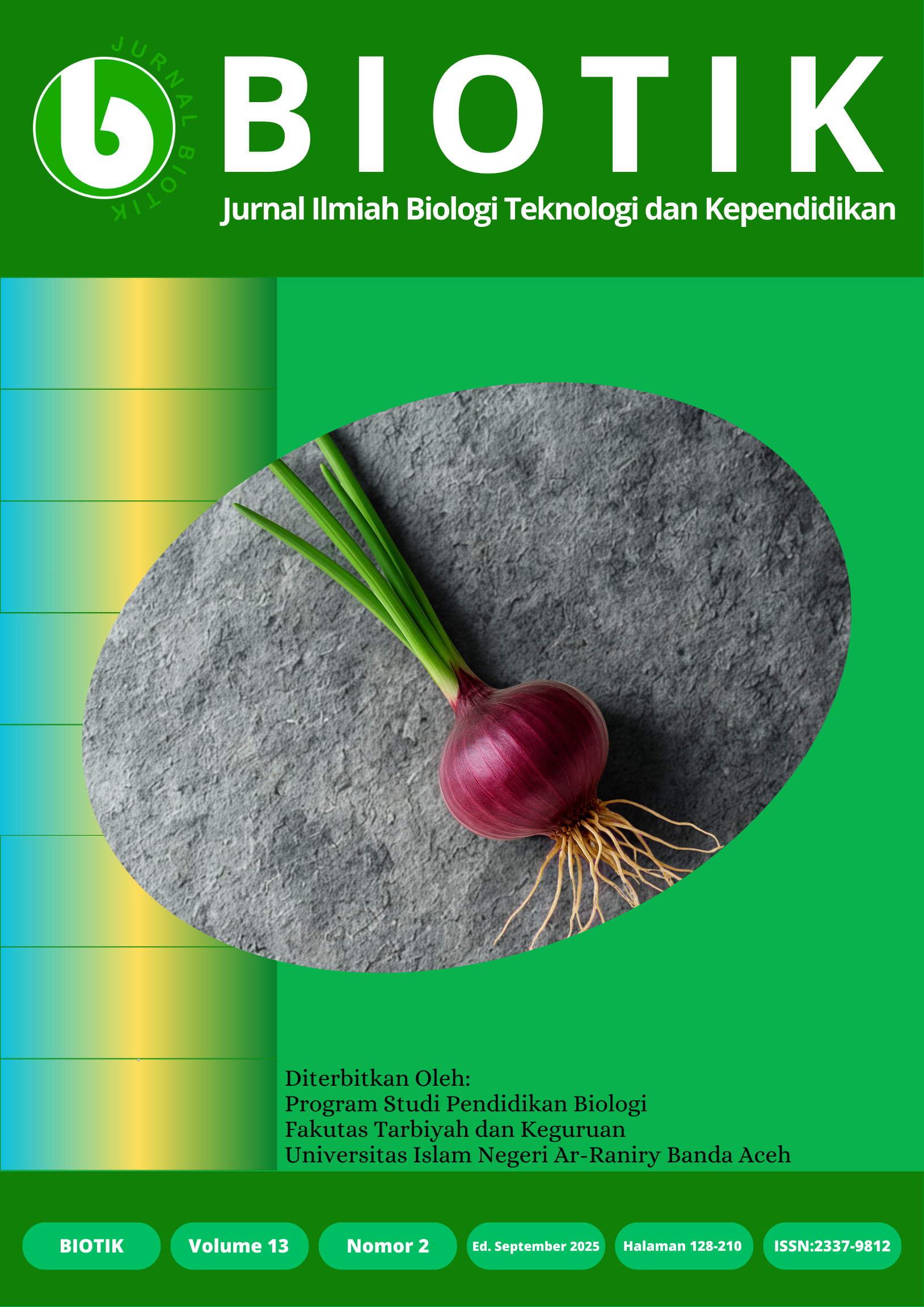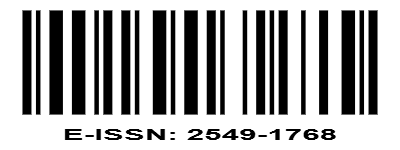Analysis of the Effects of Tropical Fruit Extracts on the Physicochemical, Tenderness and Organoleptic Characteristics of Buffalo Meat
DOI:
https://doi.org/10.22373/biotik.v13i2.31661Abstract
Buffalo meat is an essential protein source in many regions but faces quality challenges, including oxidation, discoloration, and reduced tenderness. This study investigates the impact of soaking buffalo meat in extracts from melinjau, papaya, and pineapple on its physicochemical properties (color, protein, fat content, and tenderness) and organoleptic characteristics (color, aroma, texture, tenderness, and juiciness). Buffalo meat samples were soaked in fruit extracts for varying durations, followed by analysis of color, protein and fat content, tenderness, and sensory qualities. The results showed significant effects of soaking on color, with melinjau and papaya extracts improving lightness and reducing redness. Soaking with papaya and pineapple extracts enhanced tenderness, while melinjau extract increased juiciness. Protein content decreased slightly, but fat content was significantly reduced, particularly with papaya extract. Sensory evaluation revealed that melinjau extract produced the most favorable tenderness and juiciness, while papaya and pineapple extracts also improved tenderness. These findings suggest that tropical fruit extracts can be used to enhance buffalo meat quality by improving tenderness, reducing fat content, and extending shelf life. This natural preservation method offers a potential alternative to synthetic additives, contributing to better sensory properties and higher-quality buffalo meat products.
Downloads
Downloads
Published
Issue
Section
License
Copyright (c) 2025 Faisal Abdurrahman, Othman Othman Omar, Iswadi Iswadi

This work is licensed under a Creative Commons Attribution-ShareAlike 4.0 International License.
Authors who publish with BIOTIK: Jurnal Ilmiah Biologi Teknologi dan Kependidikan agree to the following terms:
- Authors retain copyright and grant the journal right of first publication with the work simultaneously licensed under a Creative Commons Attribution License that allows others to share the work with an acknowledgement of the work's authorship and initial publication in this journal.
- Authors are able to enter into separate, additional contractual arrangements for the non-exclusive distribution of the journal's published version of the work (e.g., post it to an institutional repository or publish it in a book), with an acknowledgement of its initial publication in this journal.
- Authors are permitted and encouraged to post their work online (e.g., in institutional repositories or on their website) prior to and during the submission process, as it can lead to productive exchanges, as well as earlier and greater citation of published work.












